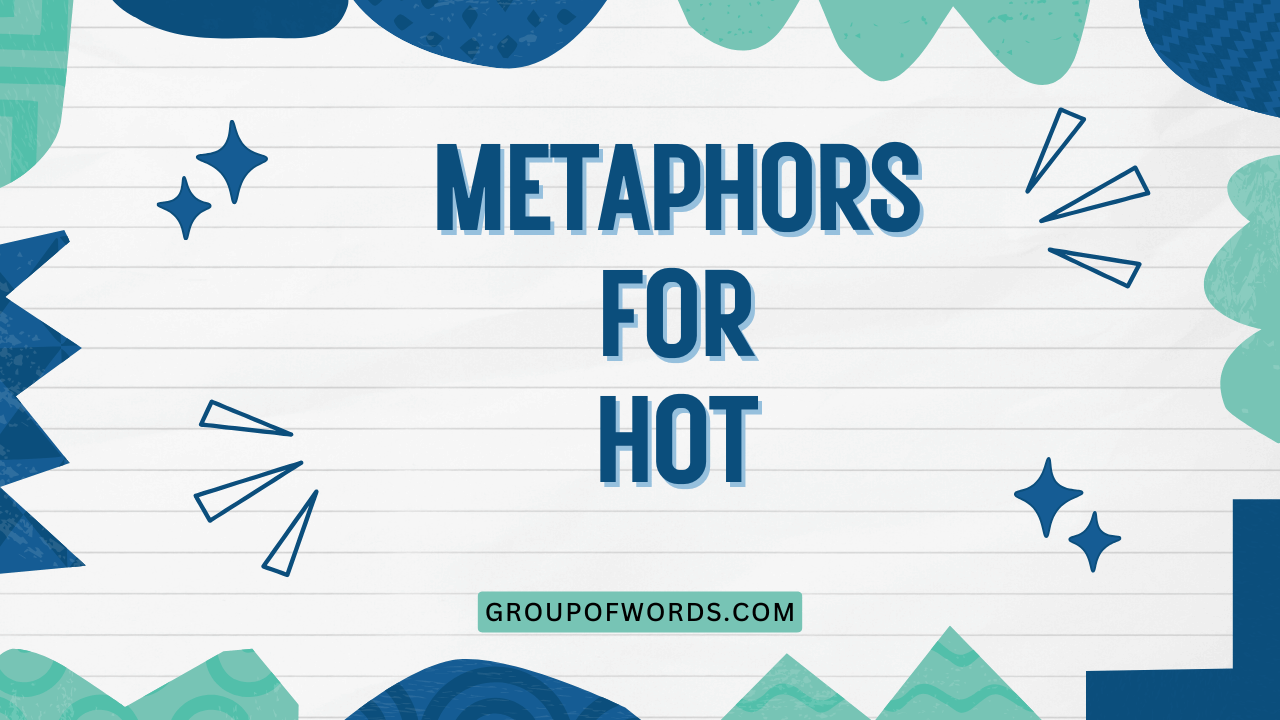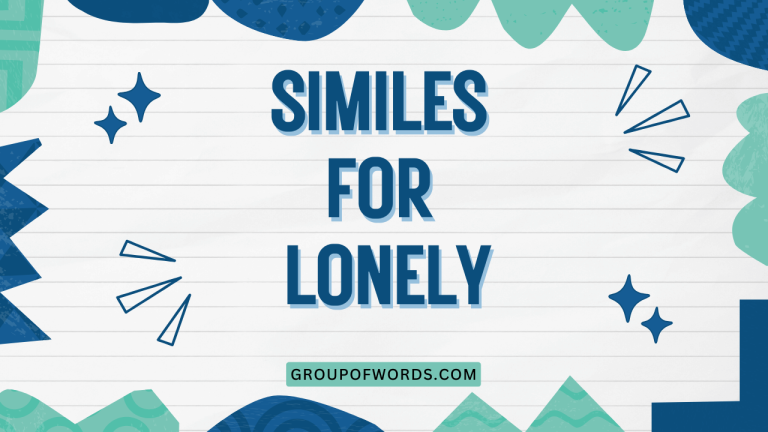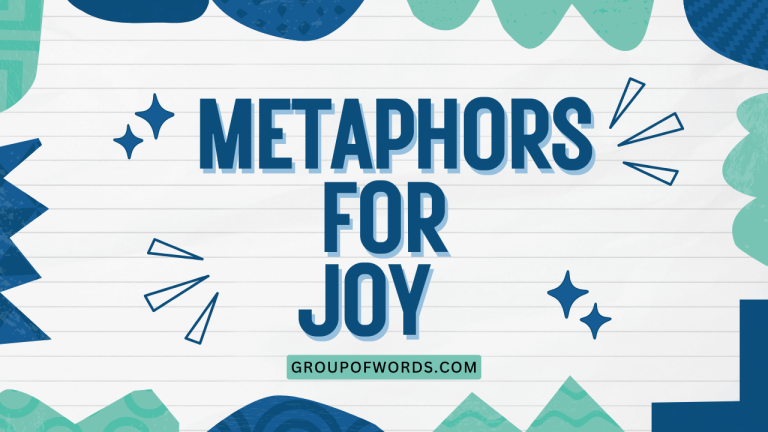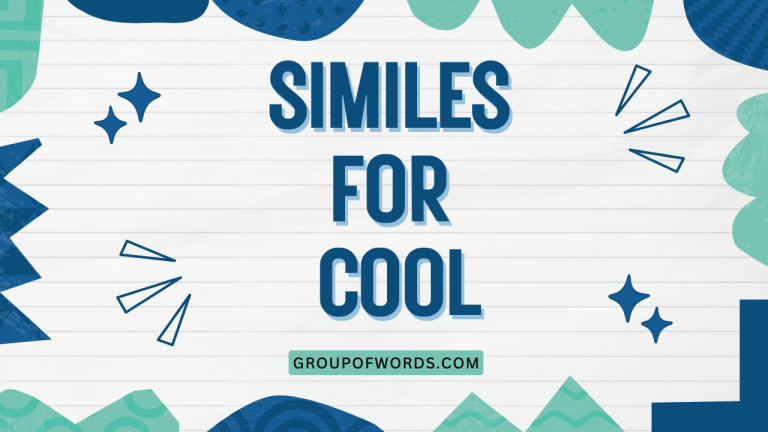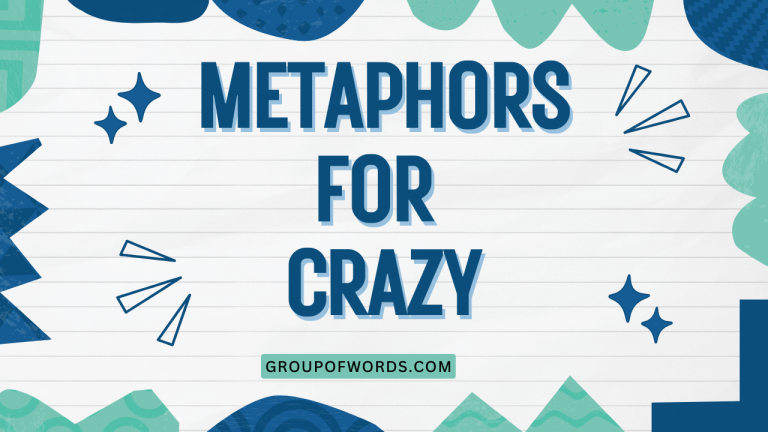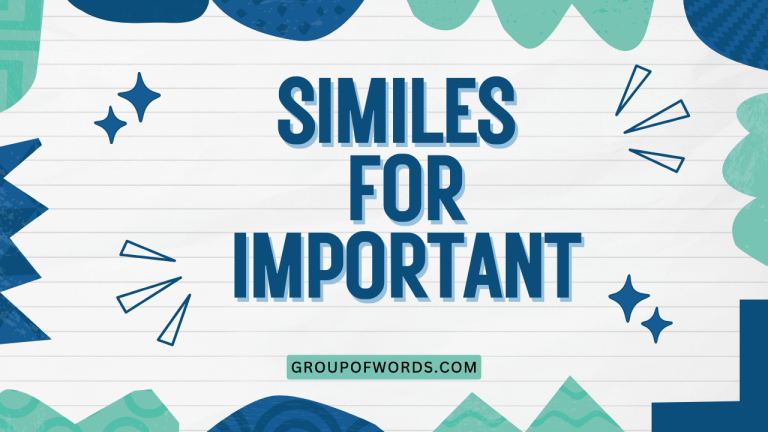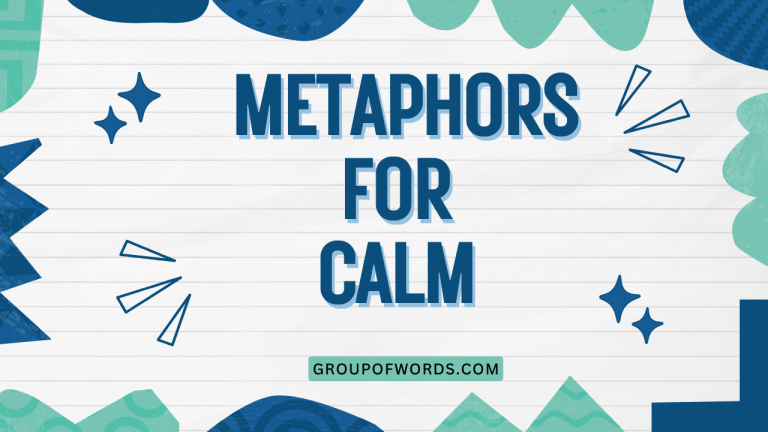Metaphors for Hot: A Comprehensive Guide to Figurative Language
Understanding metaphors is crucial for mastering the nuances of the English language. Metaphors allow us to express abstract concepts in vivid and relatable ways.
When describing heat, whether literal or figurative, metaphors are especially powerful. This article explores a wide range of metaphors for “hot,” examining their meanings, contexts, and usage.
This guide is perfect for English language learners, writers, and anyone interested in enriching their vocabulary and expressive abilities.
Table of Contents
- Introduction
- Definition of Metaphor and Its Role in Describing Heat
- Structural Breakdown of Hot Metaphors
- Types of Metaphors for Hot
- Examples of Metaphors for Hot
- Usage Rules for Hot Metaphors
- Common Mistakes When Using Hot Metaphors
- Practice Exercises
- Advanced Topics in Metaphorical Language
- Frequently Asked Questions
- Conclusion
Introduction
Metaphors are essential tools in the English language, adding depth and color to our communication. They allow us to convey complex ideas by drawing parallels between seemingly unrelated concepts.
When it comes to describing heat, metaphors are particularly effective. Instead of simply stating that something is “hot,” we can use figurative language to paint a more vivid picture.
This article delves into the rich world of metaphors for “hot,” providing a comprehensive guide to their meanings, usage, and impact. This detailed exploration will benefit students, writers, and anyone looking to enhance their understanding and application of English grammar and figurative language.
Definition of Metaphor and Its Role in Describing Heat
A metaphor is a figure of speech that directly compares two unlike things without using “like” or “as.” It asserts that one thing *is* another, creating a connection that highlights shared qualities or characteristics. This comparison is implicit, relying on the listener or reader to understand the connection being made. Metaphors are crucial for adding depth, nuance, and emotional resonance to language.
When describing heat, metaphors move beyond simple temperature readings. They can convey the intensity, the source, and even the emotional impact of heat.
For instance, saying “the desert sun was a furnace” evokes a stronger image than simply saying “it was hot.” Metaphors transform a basic description into a sensory experience, engaging the audience’s imagination and creating a more lasting impression. Metaphors help express the degree of heat, the effect of heat, or even the feeling associated with the heat, such as discomfort or danger.
Structural Breakdown of Hot Metaphors
Metaphors for “hot” typically involve two main components: the tenor and the vehicle. The tenor is the subject being described (in this case, “hot”), and the vehicle is the object or concept used to represent it. The effectiveness of a metaphor depends on the strength and relevance of the connection between the tenor and the vehicle.
For example, in the metaphor “the argument was fiery,” the tenor is the argument, and the vehicle is “fiery.” The connection lies in the shared characteristic of intensity. The argument, like fire, is passionate, potentially destructive, and difficult to control.
Understanding this structure helps in both interpreting and creating effective metaphors.
Furthermore, many metaphors for “hot” rely on implied comparisons. They don’t explicitly state the connection but rather suggest it through evocative language and imagery.
This requires the audience to actively participate in making the connection, which can lead to a more profound understanding and appreciation of the metaphor.
Types of Metaphors for Hot
Metaphors for “hot” can be broadly categorized into three main types, based on the context in which they are used:
Literal Heat Metaphors
These metaphors describe physical heat, such as the temperature of the weather, objects, or food. They often involve comparisons to things known for their intense heat, like the sun, volcanoes, or ovens.
The purpose is to convey the intensity and potentially the unpleasantness or danger of the heat.
Emotional Heat Metaphors
These metaphors describe intense emotions, such as anger, passion, or excitement. They draw a parallel between the physical sensation of heat and the overwhelming feeling of these emotions.
For example, someone might say they are “burning with anger” or “consumed by passion.”
Situational Heat Metaphors
These metaphors describe situations that are intense, high-pressure, or controversial. They often involve comparisons to things that are on fire or about to explode.
The purpose is to convey the sense of urgency, danger, and potential for conflict. For example, a political debate might be described as “a hot topic” or “a heated discussion.”
Examples of Metaphors for Hot
Here, we will provide extensive examples for each of the categories mentioned above, showcasing the diversity and creativity of metaphors for “hot.” These examples will illustrate how to effectively use metaphors to describe literal heat, emotional intensity, and high-pressure situations. Understanding these examples will help you to recognize and use metaphors more effectively in your own writing and speech.
Literal Heat Examples
The following table provides examples of metaphors used to describe literal heat. These metaphors often involve comparisons to fire, the sun, or other sources of intense heat.
| Metaphor | Explanation |
|---|---|
| The sun was a furnace. | Compares the sun to a furnace, emphasizing its intense heat output. |
| The air shimmered like it was coming off a hot stove. | Describes the heat distortion of the air, similar to the heat rising from a stove. |
| The sand burned like coals under my feet. | Compares the hot sand to burning coals, highlighting its intense heat. |
| The asphalt was a griddle cooking my shoes. | Describes the asphalt as a hot griddle, emphasizing the heat’s effect on the shoes. |
| The desert was an oven baking everything in sight. | Compares the desert to an oven, emphasizing the all-encompassing heat. |
| The soup was molten lava. | Describes the soup as extremely hot, like molten lava. |
| The coffee was a scorching inferno. | Emphasizes the coffee’s extreme heat. |
| The metal roof was a branding iron under the sun. | Compares the roof’s heat to that of a branding iron. |
| The greenhouse was a tropical hell. | Describes the greenhouse as excessively hot and humid. |
| The pavement radiated heat like a dragon’s breath. | Compares the heat radiating from the pavement to a dragon’s fiery breath. |
| The sun beat down like a blacksmith’s hammer. | The sun’s intensity is compared to the forceful impact of a blacksmith’s hammer. |
| The day was a simmering cauldron of heat. | The day’s heat is likened to a constantly simmering cauldron. |
| The air hung heavy, a blanket woven from fire. | The oppressive heat is described as a fiery blanket. |
| The car’s interior was a pizza oven. | The extreme heat inside the car is compared to a pizza oven. |
| The sun was a magnifying glass focusing on the earth. | The sun’s intense focus and heat are likened to a magnifying glass. |
| The heat rose in waves, like a visible mirage of fire. | The heat is described as visible waves, similar to a mirage. |
| The oven was a dragon’s lair, filled with fiery breath. | The intense heat of the oven is compared to a dragon’s lair. |
| The sauna was a miniature volcano. | The high heat of the sauna is likened to a small volcano. |
| The iron felt like it had been forged in the heart of the sun. | The iron’s extreme heat is compared to being forged in the sun. |
| The grill was an open-mouthed furnace, ready to devour. | The grill’s intense heat is described as a furnace ready to devour food. |
Emotional Heat Examples
The following table provides examples of metaphors used to describe intense emotions. These metaphors often involve comparisons to fire, burning, or other sources of intense heat.
| Metaphor | Explanation |
|---|---|
| She was burning with anger. | Compares her anger to a burning fire, emphasizing its intensity. |
| His passion was a raging inferno. | Describes his passion as an uncontrolled and intense fire. |
| Her jealousy was a slow-burning ember. | Compares her jealousy to a smoldering ember, suggesting a persistent and underlying emotion. |
| He was consumed by a fiery rage. | Describes his rage as a consuming fire, highlighting its destructive power. |
| Their love was a burning flame. | Compares their love to a burning flame, emphasizing its passion and intensity. |
| She felt the heat of embarrassment rise in her cheeks. | Describes the feeling of embarrassment as a physical sensation of heat. |
| His words were like a scorching rebuke. | Compares his words to a burning fire, emphasizing their harshness. |
| Her heart was on fire with excitement. | Describes her excitement as an intense and burning emotion. |
| He was simmering with resentment. | Compares his resentment to a simmering heat, suggesting a suppressed but intense emotion. |
| The news ignited a firestorm of controversy. | Describes the news as the cause of a rapid and intense controversy. |
| His temper flared like a match in the wind. | His quick and sudden temper is likened to a match flaring briefly. |
| She felt a surge of heat as she defended her beliefs. | The intensity of defending her beliefs is described as a surge of heat. |
| His frustration was a smoldering volcano beneath the surface. | His hidden frustration is compared to a smoldering volcano. |
| The argument sparked a wildfire of emotions. | The argument ignited a rapid and widespread emotional response. |
| Her anger was a slow burn, eating away at her inside. | Her anger is described as a destructive slow burn. |
| He felt the heat of shame wash over him. | The feeling of shame is described as a wave of heat. |
| Her words were like throwing gasoline on a fire of discontent. | Her words intensified the existing discontent. |
| His jealousy was a toxic heat, poisoning their relationship. | His jealousy is described as a poisonous and destructive heat. |
| She carried the burning coals of regret in her heart. | Her regret is described as a heavy and painful burden. |
| The truth was a hot knife through butter, cutting through lies. | The truth quickly and easily revealed the lies. |
Situational Heat Examples
The following table provides examples of metaphors used to describe intense or high-pressure situations. These metaphors often involve comparisons to fire, explosions, or other sources of intense energy.
| Metaphor | Explanation |
|---|---|
| The political debate was a hot topic. | Describes the debate as controversial and generating intense interest. |
| The meeting was a pressure cooker. | Compares the meeting to a pressure cooker, emphasizing the high stress and tension. |
| The negotiations were a minefield. | Describes the negotiations as dangerous and fraught with potential conflict. |
| The company was walking on thin ice. | Compares the company’s situation to walking on thin ice, emphasizing the risk of failure. |
| The project was a ticking time bomb. | Describes the project as having the potential for disastrous consequences. |
| The situation was a powder keg ready to explode. | Compares the situation to a powder keg, emphasizing the potential for sudden and violent conflict. |
| The stock market was on fire. | Describes the stock market as rapidly increasing in value. |
| The rumor mill was burning with gossip. | Compares the spread of rumors to a fire, emphasizing its rapid and uncontrolled nature. |
| The competition was white-hot. | Describes the competition as extremely intense and fierce. |
| The tension in the room was palpable. | Describes the tension as something that can be felt physically. |
| The issue became a flashpoint for protests. | The issue ignited widespread and intense protests. |
| Their relationship was a slow-motion train wreck. | Their relationship was a disaster unfolding gradually. |
| The economy was overheating. | The economy was growing too rapidly and unsustainably. |
| The scandal erupted like a volcano. | The scandal emerged suddenly and violently. |
| The peace talks were on life support. | The peace talks were fragile and near collapse. |
| The merger was a marriage made in hell. | The merger was disastrous and resulted in conflict. |
| The project was a runaway train, impossible to stop. | The project was out of control and headed for disaster. |
| The debate was a battleground of ideologies. | The debate was a fierce and intense clash of ideas. |
| The company was in the hot seat. | The company was under intense scrutiny and pressure. |
| The lawsuit was a legal inferno. | The lawsuit was complex, costly, and highly contentious. |
Usage Rules for Hot Metaphors
Using metaphors effectively requires careful consideration of context, audience, and purpose. Here are some key rules to follow when using metaphors for “hot”:
- Relevance: Ensure that the connection between the tenor and the vehicle is clear and relevant. The comparison should make sense and enhance the meaning of the description.
- Originality: While some common metaphors are effective, strive for originality to make your writing more engaging and memorable. Avoid clichés whenever possible.
- Consistency: Maintain consistency in your metaphorical language. Avoid mixing metaphors that create confusing or contradictory images.
- Clarity: Ensure that your metaphor is easily understood by your audience. Avoid obscure or overly complex comparisons that may confuse or alienate readers.
- Appropriateness: Consider the context and tone of your writing. Choose metaphors that are appropriate for the subject matter and the intended audience.
Exceptions: Sometimes, deliberately mixing metaphors can be used for humorous or stylistic effect, but this should be done intentionally and sparingly. Overusing metaphors can also weaken their impact, so use them judiciously.
Common Mistakes When Using Hot Metaphors
Several common mistakes can undermine the effectiveness of metaphors. Recognizing and avoiding these pitfalls will help you to use figurative language more skillfully.
Mixed Metaphors: Combining two or more incompatible metaphors, creating a confusing or nonsensical image.
- Incorrect: “We need to nip it in the bud and put the fire out before it snowballs.” (Combines plant growth, fire, and snowballing.)
- Correct: “We need to nip it in the bud before it becomes a problem.” OR “We need to put the fire out before it spreads.”
Clichés: Overused metaphors that have lost their impact and originality.
- Cliché: “Hot as hell.”
- Better: “The sun was a malevolent eye, searing the earth below.”
Overuse: Using too many metaphors in a single passage, which can overwhelm the reader and detract from the overall message.
- Overuse: “The project was a volcano of opportunity, a burning bridge to success, a hotbed of innovation.”
- Better: “The project was a volcano of opportunity, promising significant rewards.”
Inappropriate Tone: Using metaphors that are inconsistent with the overall tone or subject matter.
- Inappropriate: “The funeral was a hot party.” (Contrasts the somber occasion with a celebratory image.)
- Better: “The funeral was a somber gathering.”
Practice Exercises
Test your understanding of metaphors for “hot” with these exercises. Identify the type of metaphor used in each sentence and, where appropriate, suggest a more effective alternative.
Exercise 1: Identify the Type of Metaphor
| Question | Answer |
|---|---|
| 1. The argument was a blazing inferno. | Emotional |
| 2. The sun was a scorching furnace. | Literal |
| 3. The company was in the hot seat after the scandal. | Situational |
| 4. Her anger simmered like a volcano. | Emotional |
| 5. The pavement was burning like fire. | Literal |
| 6. The political climate is a pressure cooker. | Situational |
| 7. His words were like a branding iron. | Emotional |
| 8. The desert was an oven. | Literal |
| 9. The negotiations were a minefield. | Situational |
| 10. She was consumed by a fiery rage. | Emotional |
Exercise 2: Rewrite the Sentences Using Metaphors for “Hot”
| Question | Answer |
|---|---|
| 1. The competition was very intense. | The competition was a white-hot furnace. |
| 2. The debate was controversial. | The debate was a hot topic. |
| 3. He was very angry. | He was burning with anger. |
| 4. The sun was very hot. | The sun was a scorching inferno. |
| 5. The situation was very tense. | The situation was a pressure cooker. |
| 6. The scandal caused a lot of controversy. | The scandal ignited a firestorm of controversy. |
| 7. Her passion was very strong. | Her passion was a raging inferno. |
| 8. The food was extremely spicy. | The food was a volcanic eruption in my mouth. |
| 9. The market was growing rapidly. | The market was on fire. |
| 10. The meeting was very stressful. | The meeting was a pressure cooker about to explode. |
Exercise 3: Create Your Own Metaphors
Create original metaphors for the following scenarios using the concept of “hot.”
- Describing a very awkward social situation.
- Describing a period of intense creativity.
- Describing a very competitive sports game.
- Describing a heated argument between friends.
- Describing the feeling of intense stage fright.
Advanced Topics in Metaphorical Language
For advanced learners, exploring the philosophical and psychological underpinnings of metaphor can provide a deeper understanding of its power and impact. Consider researching the following topics:
- Conceptual Metaphor Theory: Explores how abstract concepts are understood through metaphorical mappings from more concrete domains.
- Cognitive Linguistics: Examines the role of metaphor in shaping thought and understanding.
- Literary Analysis: Analyzes the use of metaphor in literature to create meaning and evoke emotions.
- Rhetoric: Studies the persuasive power of metaphor in public speaking and argumentation.
Delving into these areas will enhance your ability to not only use metaphors effectively but also to understand their deeper significance and influence on human thought and communication.
Frequently Asked Questions
Here are some frequently asked questions about metaphors for “hot”:
- What is the difference between a metaphor and a simile?
A metaphor directly compares two unlike things by stating that one *is* the other, while a simile uses “like” or “as” to make a comparison. For example, “The sun was a furnace” (metaphor) vs. “The sun was like a furnace” (simile).
- How can I avoid using clichés when writing metaphors?
Read widely, observe the world around you, and try to find fresh and original connections between ideas. Experiment with different perspectives and challenge yourself to come up with unexpected comparisons.
- Is it okay to mix metaphors sometimes?
Deliberately mixing metaphors can be used for humorous or stylistic effect, but it should be done intentionally and sparingly. Avoid accidentally mixing metaphors, as this can create confusion.
- How do I know if a metaphor is effective?
An effective metaphor should be clear, relevant, and engaging. It should enhance the meaning of the description and create a vivid image in the reader’s mind. Test your metaphors on others to get feedback.
- Can a metaphor be too complex?
Yes, a metaphor can be too complex if it is obscure or difficult to understand. The goal is to enhance clarity and understanding, not to confuse the reader. Choose metaphors that are accessible to your intended audience.
- How important is cultural context when using metaphors?
Cultural context is very important. Some metaphors may be easily understood in one culture but not in another. Be mindful of your audience and choose metaphors that are appropriate for their cultural background.
- What role does imagery play in creating effective metaphors?
Imagery is crucial for creating effective metaphors. Strong imagery helps to create a vivid and memorable connection between the tenor and the vehicle, enhancing the impact of the metaphor.
- How can I improve my ability to create effective metaphors?
Practice regularly, read widely, and pay attention to the metaphors used by other writers and speakers. Experiment with different techniques and seek feedback from others. The more you practice, the better you will become at creating effective metaphors.
Conclusion
Mastering metaphors for “hot” is a valuable skill for anyone seeking to enhance their communication abilities. By understanding the different types of metaphors, following the usage rules, and avoiding common mistakes, you can use figurative language to create more vivid, engaging, and impactful descriptions.
Remember to focus on relevance, originality, and clarity when crafting your own metaphors. Continue to practice and experiment with different techniques, and you will find that your writing and speaking become more expressive and compelling.
The ability to use metaphors effectively will enrich your understanding and appreciation of the English language.
